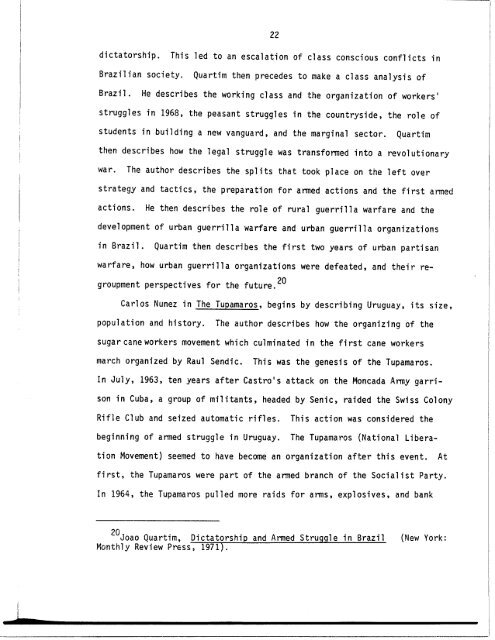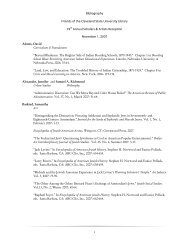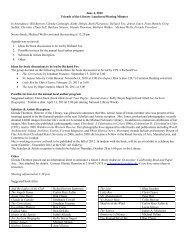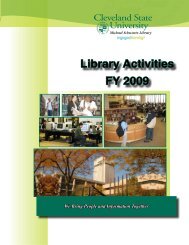revolutionary action movement (ram) - Michael Schwartz Library
revolutionary action movement (ram) - Michael Schwartz Library
revolutionary action movement (ram) - Michael Schwartz Library
You also want an ePaper? Increase the reach of your titles
YUMPU automatically turns print PDFs into web optimized ePapers that Google loves.
2 2<br />
dictatorship . This led to an escalation of class conscious conflicts in<br />
Brazilian society . Quartim then precedes to make a class analysis of<br />
Brazil . He describes the working class and the organization of workers'<br />
struggles in 1968, the peasant struggles in the countryside, the role of<br />
students in building a new vanguard, and the marginal sector . Quartim<br />
then describes how the legal struggle was transformed into a <strong>revolutionary</strong><br />
war . The author describes the splits that took place on the left over<br />
strategy and tactics, the preparation for armed <strong>action</strong>s and the first armed<br />
<strong>action</strong>s . He then describes the role of rural guerrilla warfare and the<br />
development of urban guerrilla warfare and<br />
urban guerrilla organizations<br />
in Brazil .<br />
Quartim then describes the first two years of urban partisan<br />
warfare, how urban guerrilla organizations were defeated, and their regroupment<br />
perspectives for the future . 20<br />
Carlos Nunez in The Tupamaros , begins by describing Uruguay, its size,<br />
population and history . The author describes how the organizing of the<br />
sugarcane workers <strong>movement</strong> which culminated in<br />
the first cane workers<br />
march organized by Raul Sendic . This was the genesis of the Tupamaros .<br />
In July, 1963, ten years after Castro's attack on the Moncada Army garrison<br />
in Cuba, a group of militants, headed by Senic, raided the Swiss Colony<br />
Rifle Club and seized automatic rifles . This <strong>action</strong> was considered the<br />
beginning of armed struggle in Uruguay . The Tupamaros (National Liberation<br />
Movement) seemed to have become an organization after this event . At<br />
first, the Tupamaros were part of the armed branch of the Socialist Party .<br />
In 1964, the Tupamaros pulled more raids for arms, explosives, and bank<br />
2D Joao Quartim, Dictatorship and Armed Struggle in Brazil (New York :<br />
Monthly Review Press, 1971) .








